Planetary research in weightlessness
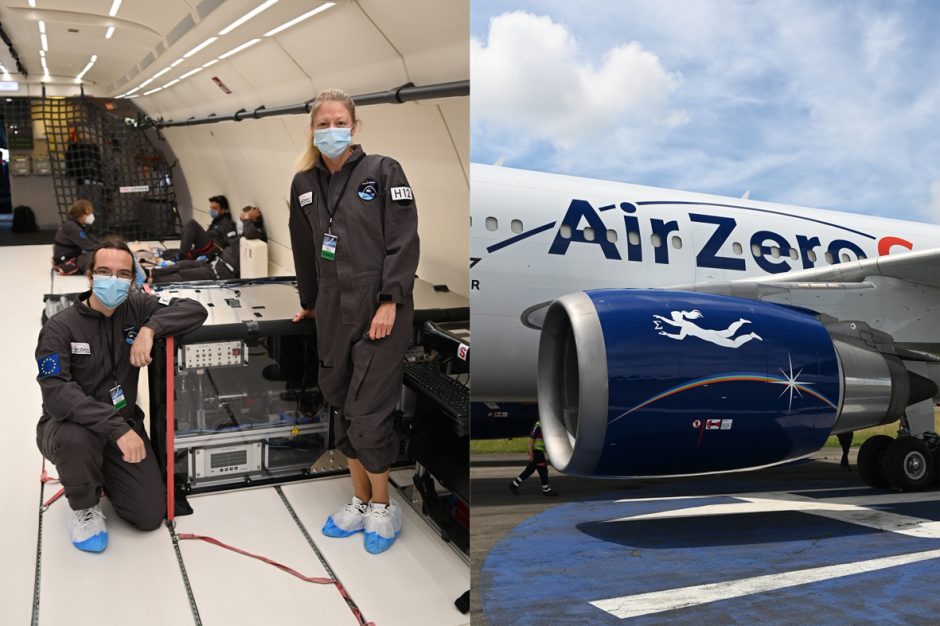
In a laboratory of a special kind, researchers from the National Centre of Competence in Research PlanetS were able to conduct experiments on planet formation on board the fourth Swiss parabolic flight campaign.
It is a cool, cloudy morning at the military airfield in Dübendorf. The fourth Swiss parabolic flight campaign is about to launch here. Among the participants are Holly Capelo and Jean-David Bodénan from the National Centre of Competence in Research PlanetS. Together with their research colleagues, they are checking the function of the instruments one last time on board the A310 Zero-G and ensure that everything is ready for the experiments. Then it’s time to get serious: anyone not flying must leave the aircraft. At 9:45 local time the airplane’s door is closed and an aircraft tractor brings the plane to the runway. Shortly after, it disappears into the clouds.
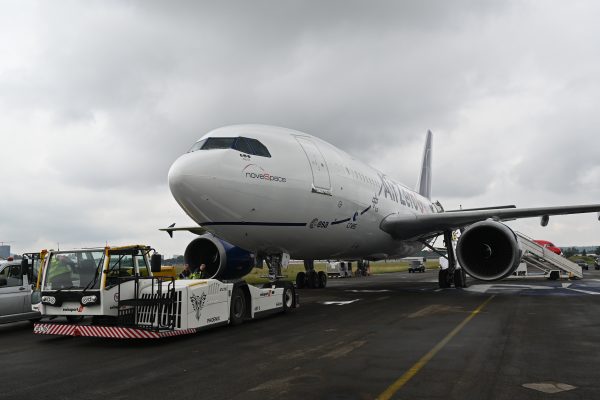
NoveSpace’s A310 with the PlanetS TEMPus VoLA experiment on board, shortly before departure. Picture: Guido Schwarz
How planets are formed from dust
The destination: the airspace over the south of France. There, the aircraft will perform 16 parabolic flights for a little over an hour, most of which will involve 20 seconds of weightlessness.
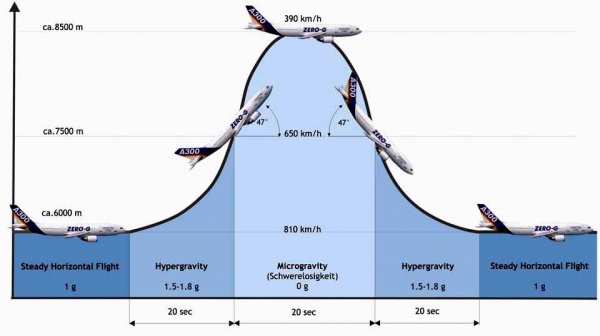
Overview of the different parabolic flight phases. Source: Space Hub University of Zurich
With the TEMPus VoLA initiative, the PlanetS team wants to investigate collisions of dust particles that are involved in the formation of planets in a similar way. “These processes are the key to understanding how kilometre-sized planetary building blocks are formed from microscopic dust particles,” explains Antoine Pommerol, who is also involved in the experiment. The scientists not only use the weightless phase, but also those sections of the parabolic flight with almost double the force of gravity – towards the beginning and end of the parabolic flight trajectory.
Difficult preparation
That the experiment could take place at all was not self-evident. Like many other things, the team’s plans were upset by the Corona pandemic. Under the strict Covid-19 protection measures, scientists and engineers had to invest a lot of time in the development and construction of the instruments during the last months, as Mathias Brändli, engineer at the University of Berne recalls with a smile: “It was a long process, with a few hours of overtime accumulating. But in the end we were able to assemble the instrument just in time”.
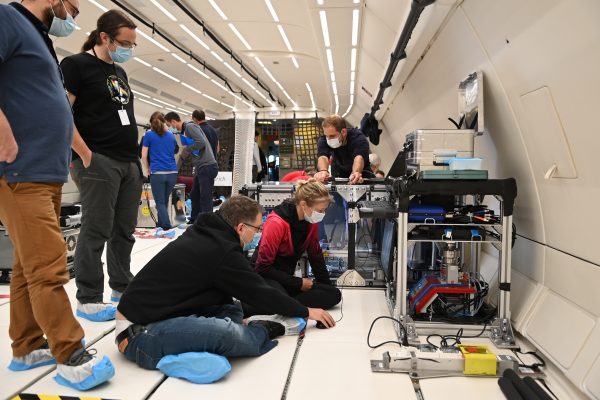
The TEMPus VoLA team installing the instruments on board the A310 Zero-G. Picture: Guido Schwarz
However, due to the short completion time, the devices could not be tested in detail. “Usually you have a testing and commissioning phase after the construction of such instruments. Due to the Corona pandemic, we had to shorten this phase considerably. For some of the instruments, this flight therefore serves as a test,” explains Holly Capelo. But the most important components could be checked and should work.
Experiments are successful
It’s 1:30 in the afternoon. Around three hours after takeoff the Zero-G plane lands back in Dübendorf. Capelo and Bodénan exit with a pleased expression on their faces. “It was very exciting to see our experiment in action. I sat directly in front of it and was able to observe how the particles floated,” Capelo reports.
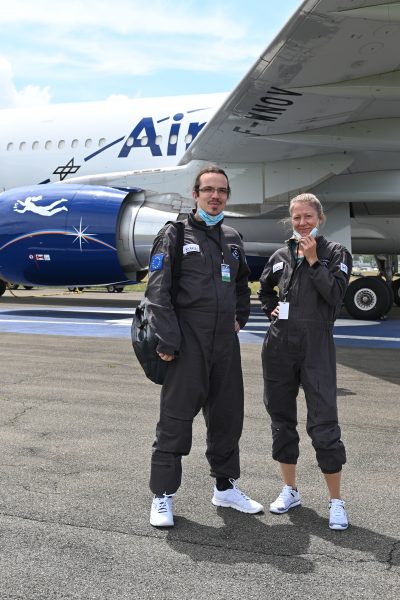
Holly Capelo and Jean-David Bodénan after their Zero-G flight. Picture: Guido Schwarz
In a nearby hangar of the airfield, the team takes a first look at the captured images. ” We could see that the experiment was doing what we wanted,” explains Jean-David Bodénan.
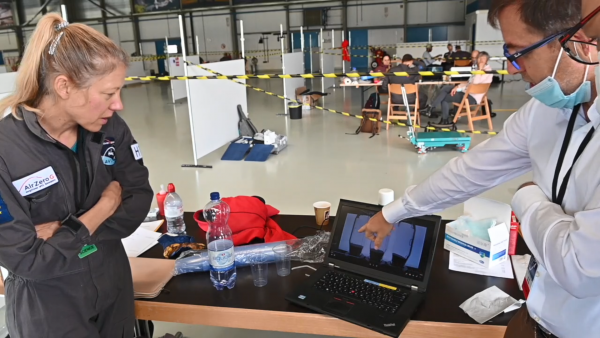
Capelo and her research colleagues look at the images of the experiment. Picture: Guido Schwarz
So the flight was a success for the PlanetS team. The scientists will now evaluate their results.
Video material:
Categories: News
